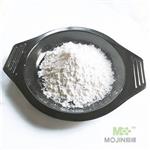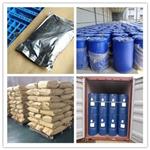- TITANIUM
-

- $0.00 / 25KG
-
2023-09-11
- CAS:16962-40-6
- Min. Order: 1KG
- Purity: 99%
- Supply Ability: 50000KG/month
- TITANIUM
-

- $1.00 / 1kg
-
2023-01-14
- CAS:16962-40-6
- Min. Order: 1kg
- Purity: 99%
- Supply Ability: 5000 Ton
- TITANIUM
-

- $10.00 / 1KG
-
2021-11-02
- CAS:16962-40-6
- Min. Order: 100KG
- Purity: 99%
- Supply Ability: 100 mt
|
| | TITANIUM Basic information |
| | TITANIUM Chemical Properties |
| Hazard Codes | | | HS Code | 28269080 | | Toxicity | LD50 ivn-mus: 56 mg/kg CSLNX* NX#00134 |
| | TITANIUM Usage And Synthesis |
| Chemical Properties | white crystalline powder, crystals and/or chunks | | History | Discovered by Gregor in 1791; named by
Klaproth in 1795. Impure titanium was prepared by Nilson
and Pettersson in 1887; however, the pure metal (99.9%) was
not made until 1910 by Hunter by heating TiCl4 with sodium in
a steel bomb. Titanium is present in meteorites and in the sun.
Rocks obtained during the Apollo 17 lunar mission showed
presence of 12.1% TiO2. Analyses of rocks obtained during
earlier Apollo missions show lower percentages. Titanium
oxide bands are prominent in the spectra of M-type stars.
The element is the ninth most abundant in the crust of the
Earth. Titanium is almost always present in igneous rocks and
in the sediments derived from them. It occurs in the minerals
rutile, ilmenite, and sphene, and is present in titanates and
in many iron ores. Deposits of ilmenite and rutile are found
in Florida, California, Tennessee, and New York. Australia,
Norway, Malaysia, India, and China are also large suppliers
of titanium minerals. Titanium is present in the ash of coal,
in plants, and in the human body. The metal was a laboratory
curiosity until Kroll, in 1946, showed that titanium could be
produced commercially by reducing titanium tetrachloride
with magnesium. This method is largely used for producing
the metal today. The metal can be purified by decomposing
the iodide. Titanium, when pure, is a lustrous, white metal. It
has a low density, good strength, is easily fabricated, and has
excellent corrosion resistance. It is ductile only when it is free
of oxygen. The metal burns in air and is the only element that
burns in nitrogen. Titanium is resistant to dilute sulfuric and
hydrochloric acid, most organic acids, moist chlorine gas, and
chloride solutions. Natural titanium consists of five isotopes
with atomic masses from 46 to 50. All are stable. Eighteen other unstable isotopes are known. The metal is dimorphic.
The hexagonal α form changes to the cubic β form very slowly
at about 880°C. The metal combines with oxygen at red heat,
and with chlorine at 550°C. Titanium is important as an alloying
agent with aluminum, molybdenum, manganese, iron,
and other metals. Alloys of titanium are principally used for
aircraft and missiles where lightweight strength and ability to
withstand extremes of temperature are important. Titanium
is as strong as steel, but 45% lighter. It is 60% heavier than
aluminum, but twice as strong. Titanium has potential use in
desalination plants for converting sea water into fresh water.
The metal has excellent resistance to sea water and is used
for propeller shafts, rigging, and other parts of ships exposed
to salt water. A titanium anode coated with platinum has
been used to provide cathodic protection from corrosion by
salt water. Titanium metal is considered to be physiologically
inert; however, titanium powder may be a carcinogenic hazard.
When pure, titanium dioxide is relatively clear and has
an extremely high index of refraction with an optical dispersion
higher than diamond. It is produced artificially for use
as a gemstone, but it is relatively soft. Star sapphires and rubies
exhibit their asterism as a result of the presence of TiO2.
Titanium dioxide is extensively used for both house paint and
artist’s paint, as it is permanent and has good covering power.
Titanium oxide pigment accounts for the largest use of the element.
Titanium paint is an excellent reflector of infrared, and
is extensively used in solar observatories where heat causes
poor seeing conditions. Titanium tetrachloride is used to iridize
glass. This compound fumes strongly in air and has been
used to produce smoke screens. The price of titanium metal
(99.9%) is about $1100/kg. | | Uses | Ammonium hexafluorotitanate is used as an anti-corrosive cleaning agent. It is also used for the production of ceramics and glass. Further, it is used in the preparation of synthetic gems. | | Safety Profile | Poison by intravenous route. See also FLUORIDES, AMMONIA, and TITANIUM COMPOUNDS. When heated to decomposition it emits very toxic fumes of Fand NOx,. |
| | TITANIUM Preparation Products And Raw materials |
|